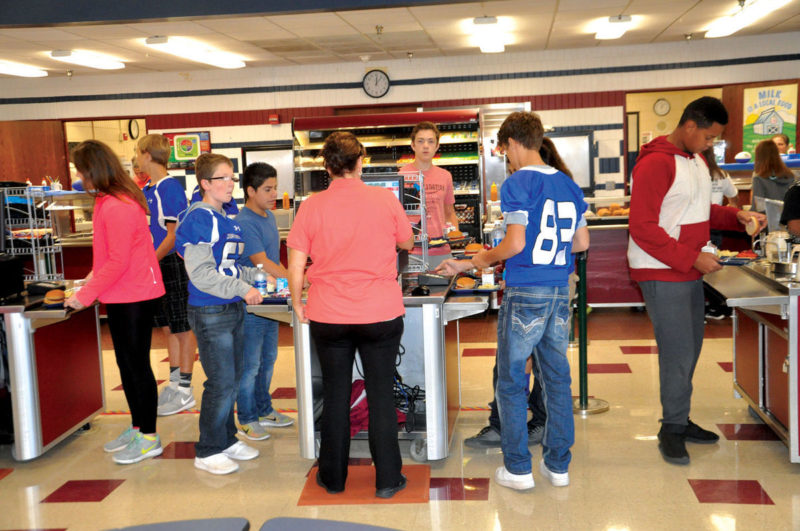
Share On Social!
Owatonna Public Schools in Steele County Minnesota (7.5% Latino) are celebrating National Farm to School month this October by continuing to implement healthy changes in school lunches.
Since 2014 the district has been working with local vendors as much as possible, after receiving $100,000 in grants from Blue Cross Blue Sheild of Minnesota and the US Department of Agriculture the school district has incorporated more fresh turkey meat, and fruits and vegetables from local farmers.
Food hubs have also helped bring the school to work with local food vendors who deliver fresh fruits and vegetables to the hubs and then are delivered to the schools. Even options like pizza or hamburgers only available in the High Schools are made with local dough, low-fat cheese, meats without fillers, fresh vegetables and whole-grain buns.
Taste tests within the district happen yearly and help the school continue to find foods that the students will enjoy and over 65% of the meals served within the schools are made from scratch.
“Owatonna probably spends more on food services than the average district, but it’s “a balance we try to strike.” Rachel Valesano the director of food and nutrition services for the Owatonna district told People’s Press. “After all, we want the kids to eat the food, enjoy it and learn healthy habits they can hopefully take with them all their lives.”
Valesano is also a dietician and works within the district to incorporate healthy meals that focus on helping to prevent chronic diseases like heart disease, diabetes, and obesity as well as creating life-long healthy habits for the students. Much of the foods offered are lower in sodium and protein-rich.
The district works jointly with space and equipment from the high school and junior high building, distributing food and tasks to help provide fresh options for each school within the district.
Schools should be a more controlled environment, where any kid, regardless of socioeconomic status can enjoy a healthy and nutritious meal, Janelle Waldock, leader of the Center of Prevention and vice president of community health and health equity at Blue Cross and Blue Shield of Minn. explained to People’s Press.
Latino kids, who are often in schools with less nutritious options, and are often surrounded by unhealthy food options, need more healthy school food environments.
See how you can help take action towards Latino kids health by clicking here.
By The Numbers
84
percent
of Latino parents support public funding for afterschool programs



